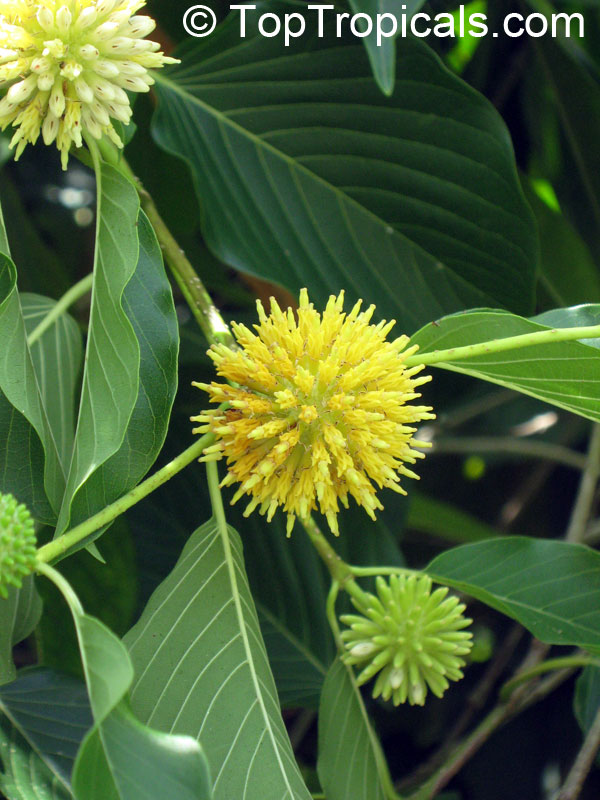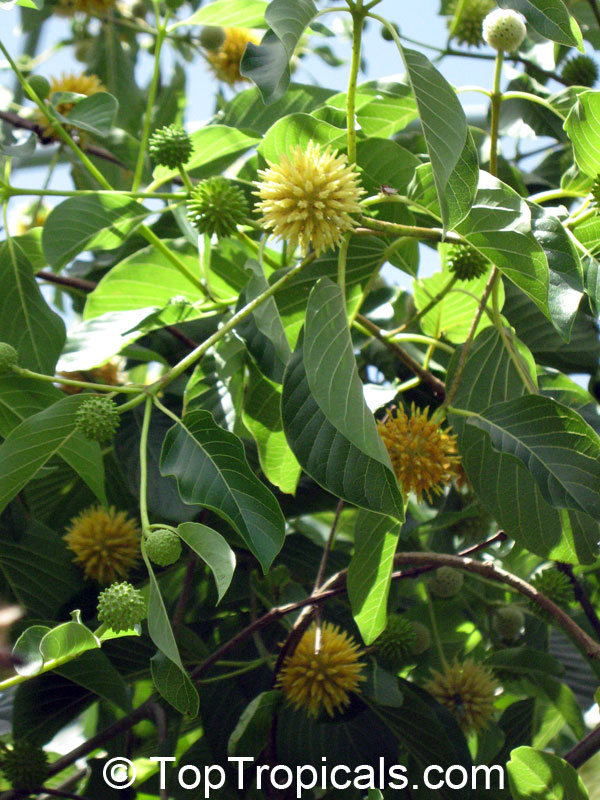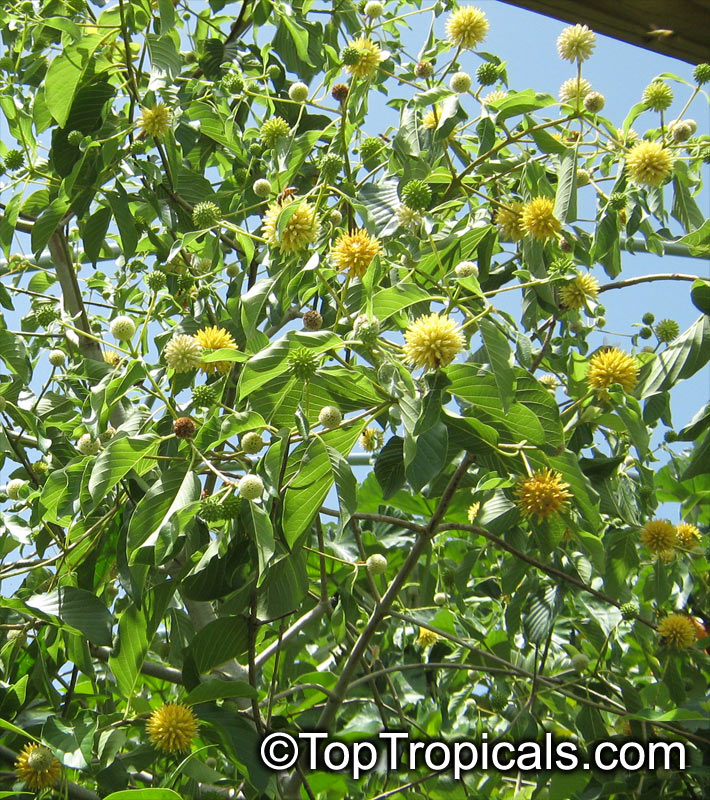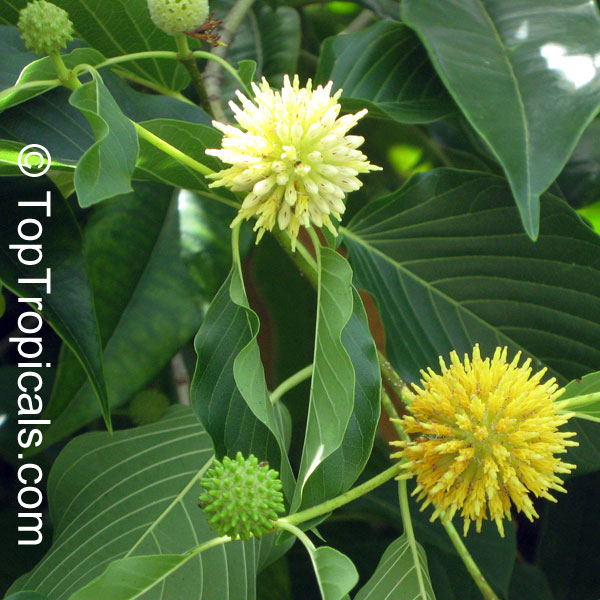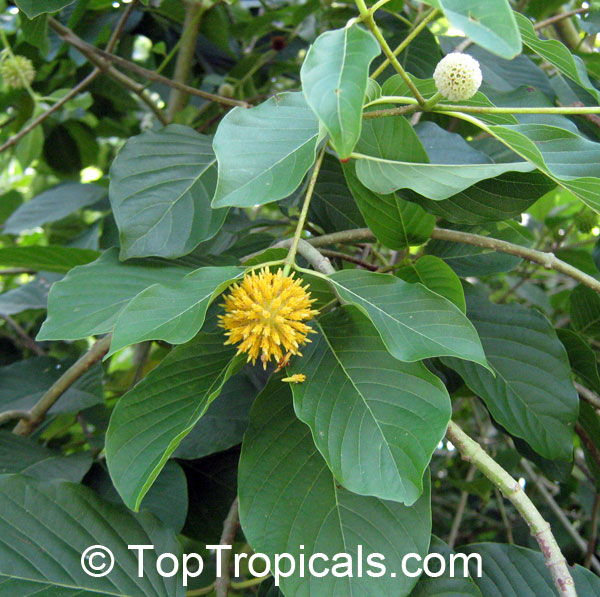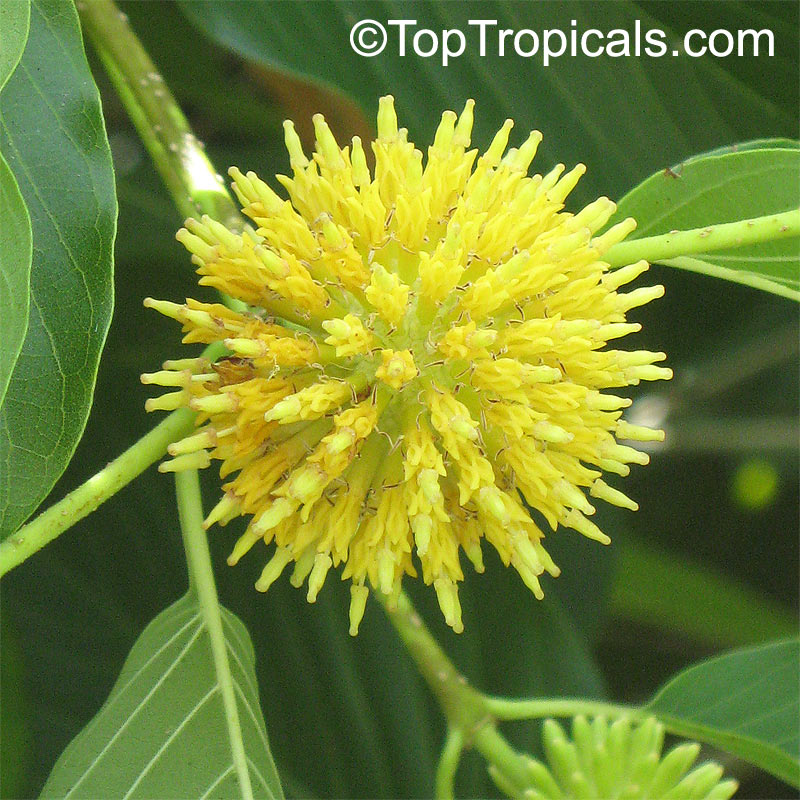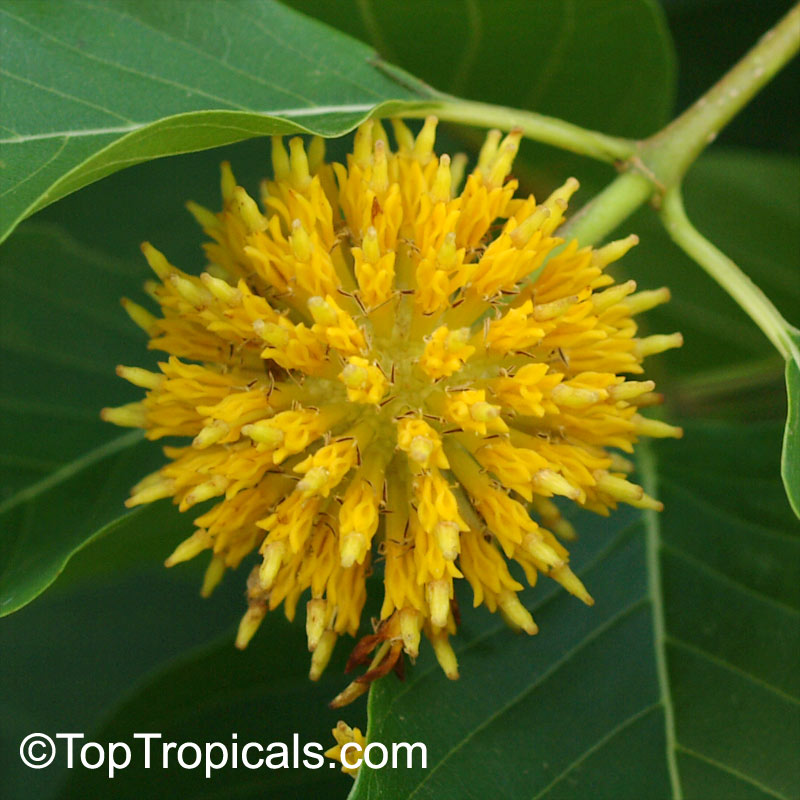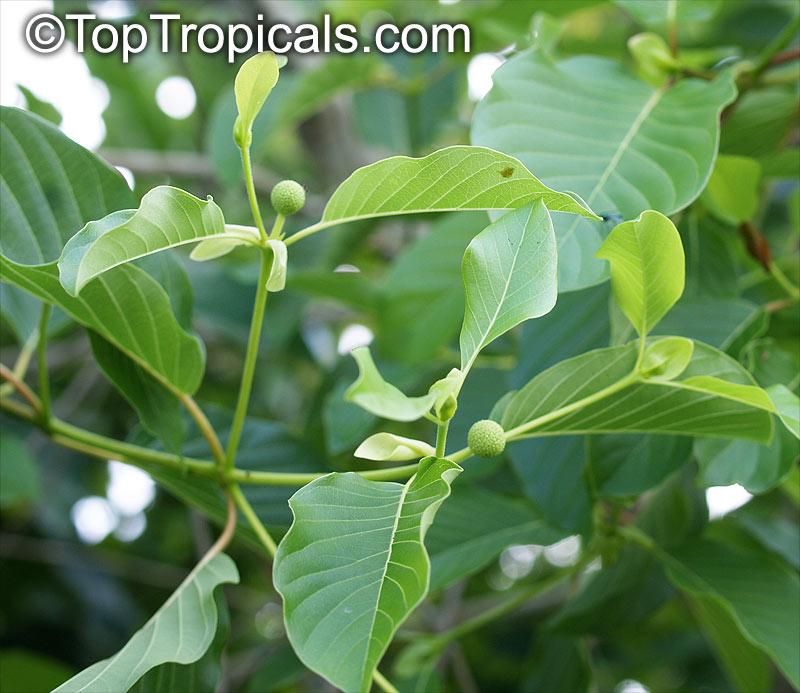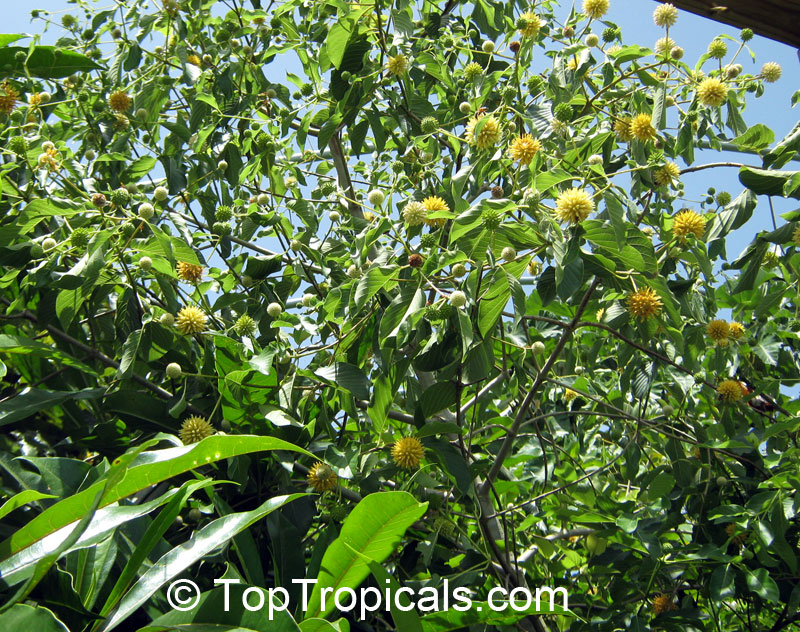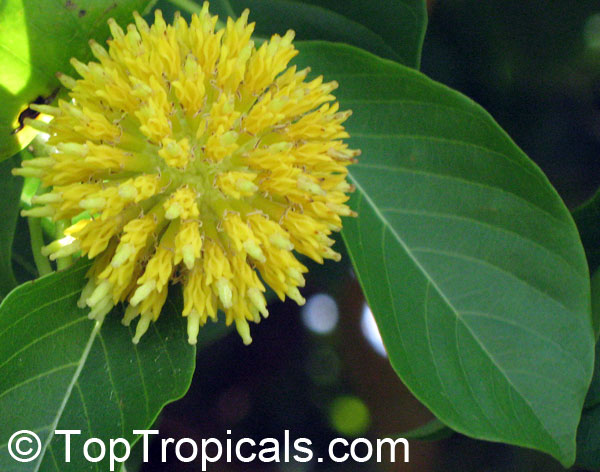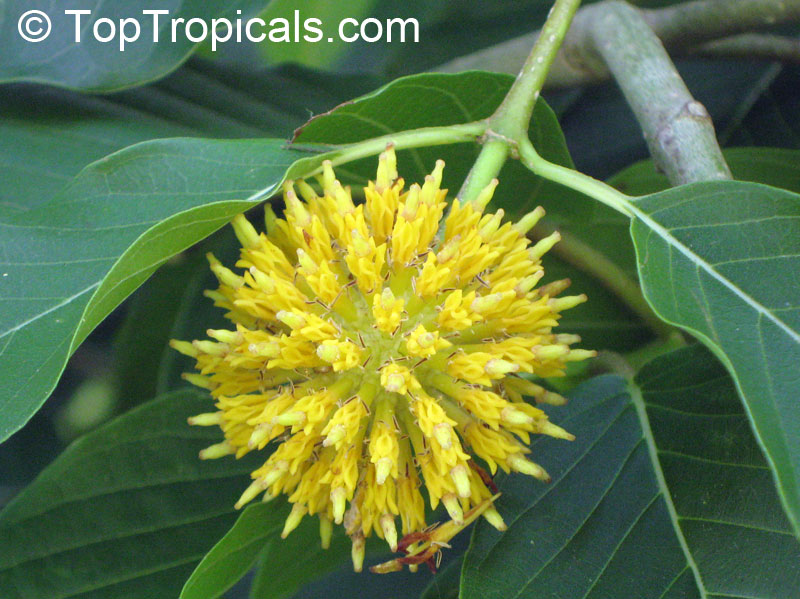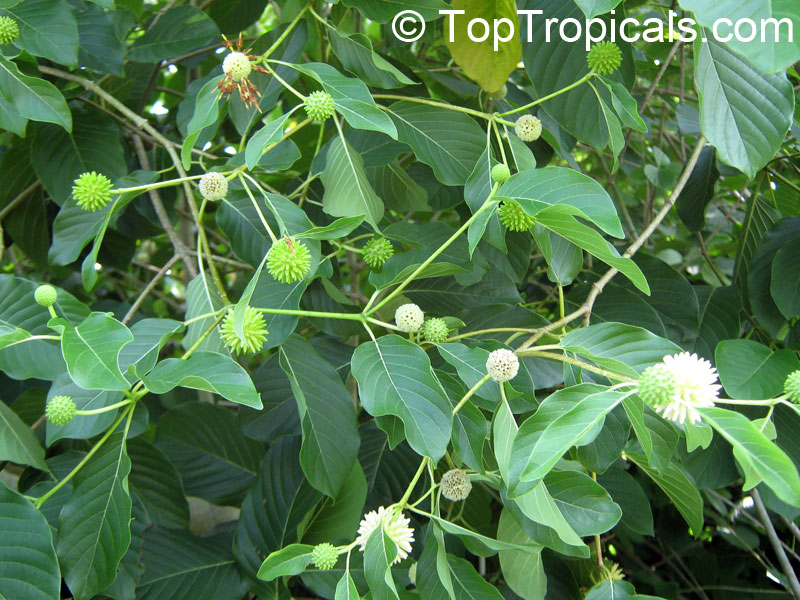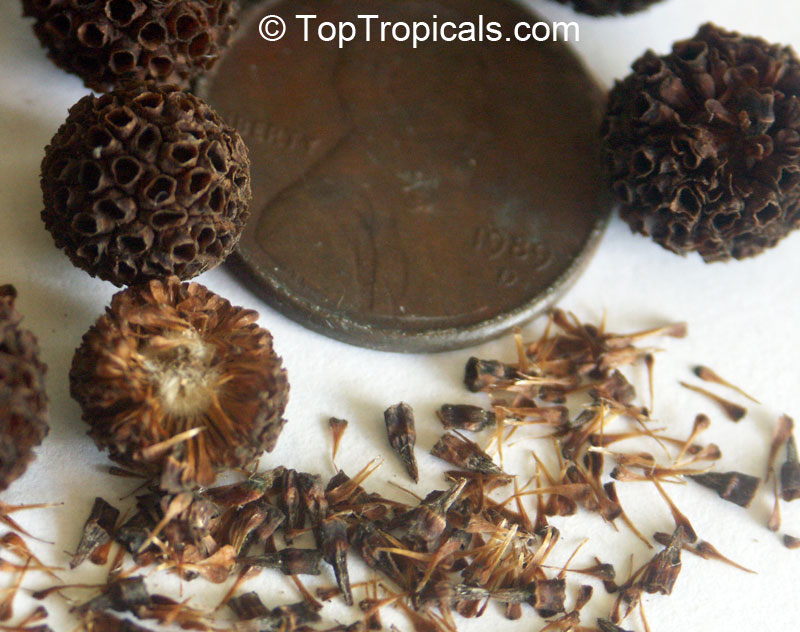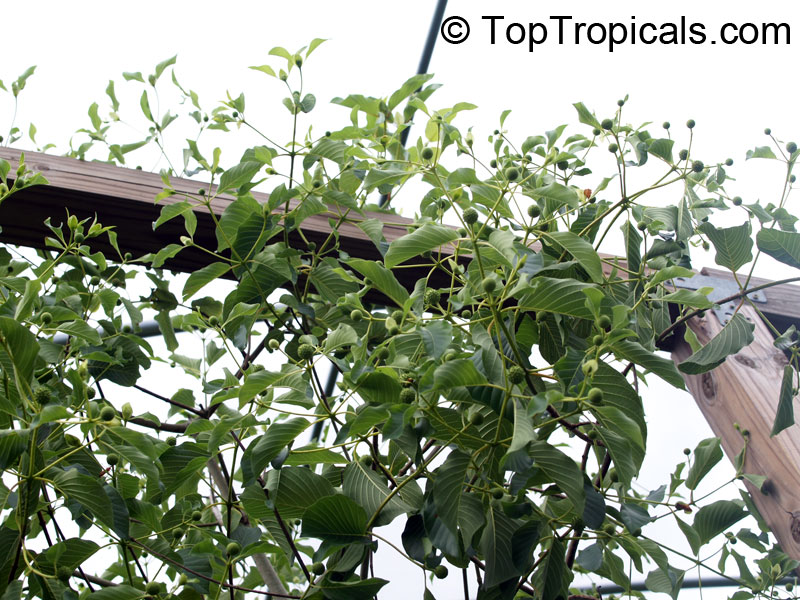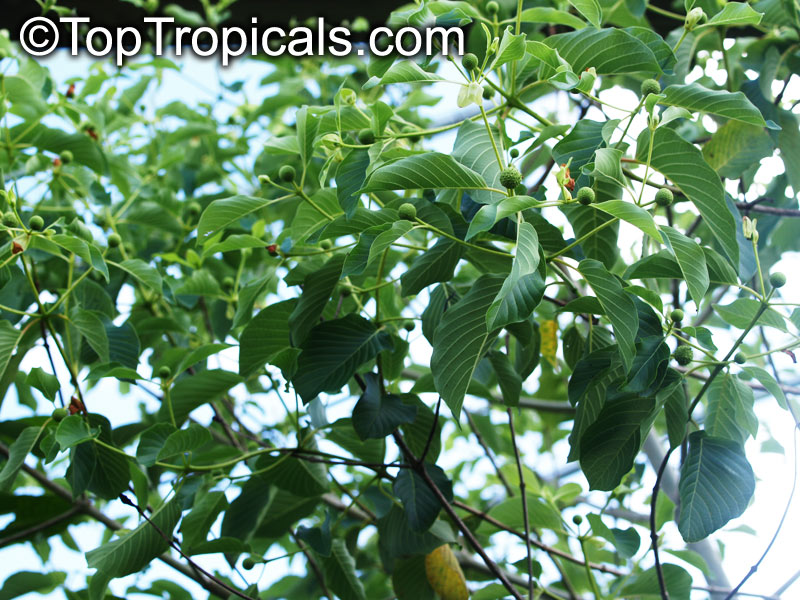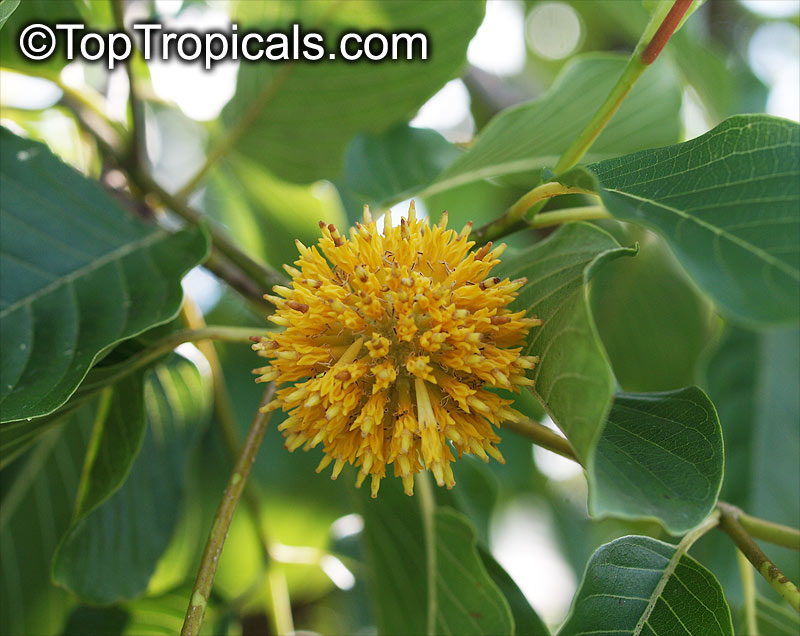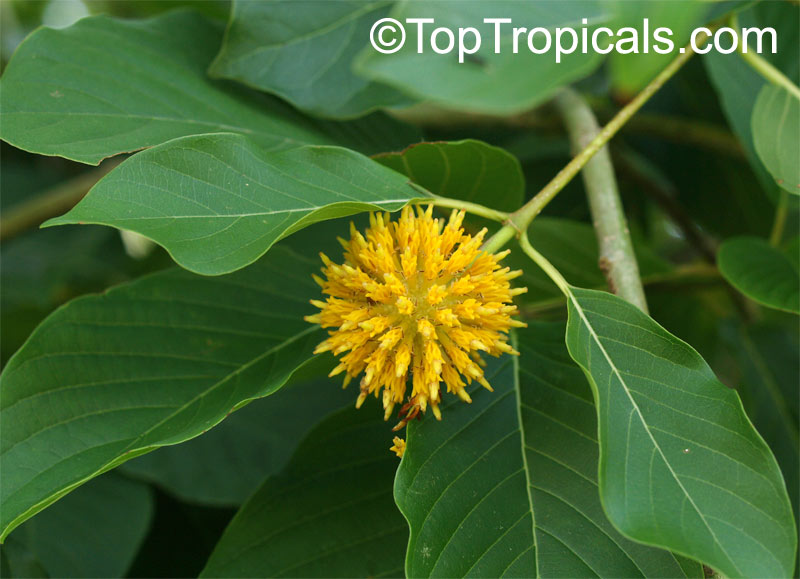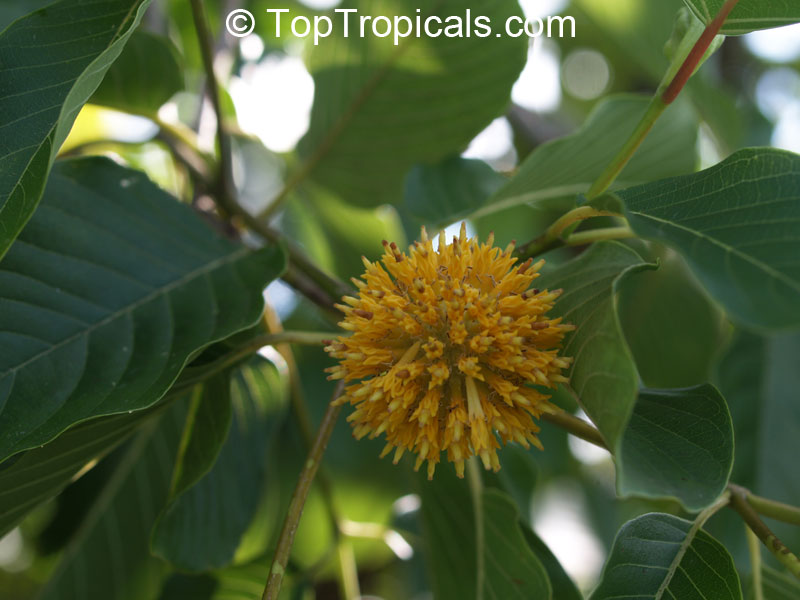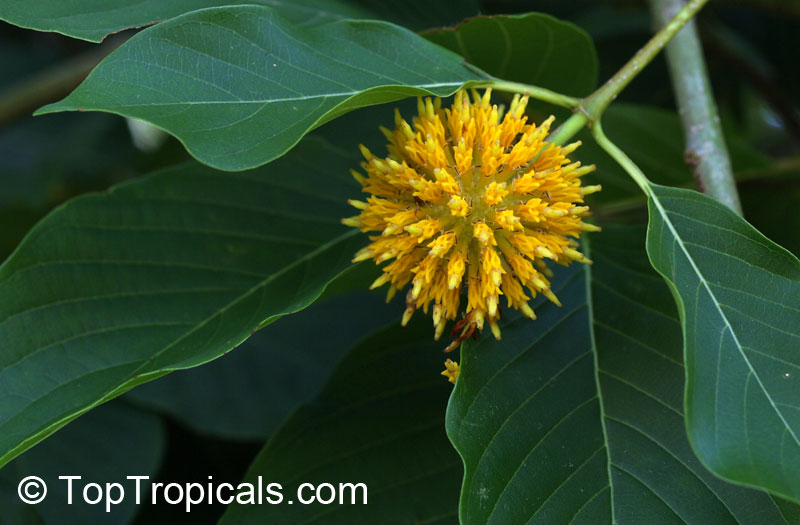Mitragyna speciosa (Kratom)
Top Tropicals Plant Encyclopedia
Botanical name: Mitragyna speciosa
Common name: Kratom
Family: Rubiaceae
Origin: Southeast Asia






Kratom, also known as Mitragyna speciosa, is a small tree native to Southeast Asia that belongs to the same family as coffee and the psychoactive plant Psychotria viridis . It has been traditionally used in countries such as Thailand and Malaysia for its psychoactive properties, although it is now illegal in these countries. In Southeast Asia, the fresh leaves of the kratom tree are commonly chewed, often continuously, by manual laborers or workers seeking a numbing and stimulating effect. Kratom is a tropical plant and grows best in full sun to partial shade with regular watering. It can reach heights of up to 10-20 feet and produces bright yellow and orange flowers.
In Southeast Asia the fresh leaves are commonly chewed, often continuously, by workers or manual laborers seeking a numbing, stimulating effect. Other species in the Mitragyna genus are used medicinally in Africa.
It grows in USDA Zone 9-11. If you live in a region with cold temperatures, it is important to protect your kratom plants by bringing them indoors during cold weather.
